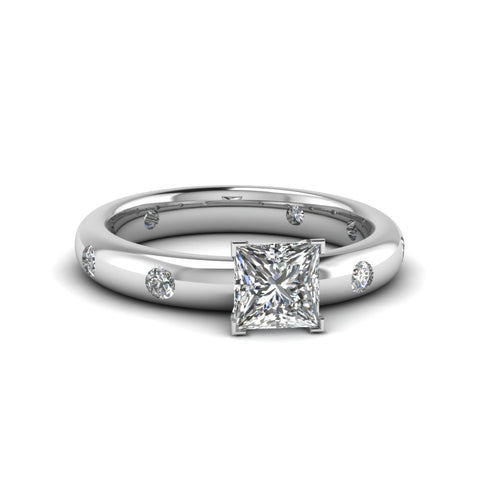Jewelry 101: Jewelry types and settings
Different kinds of jewelry:
According to the United States Gem and jewelry industry, jewelry can be divided into three categories:
- Fine Jewelry
- Bridge Jewelry
- Fashion/Costume jewelry
Fine jewelry is made of precious metals such as 14K or finer gold, sterling silver, or platinum. If it uses exquisite colored gems in large sizes then they belong to the high jewelry which is quite expensive but worth every bit.
Bridge jewelry is the category in between. It’s made of lightweight gold that’s less than 14K , gold-filled metal or sterling silver, and with or without lower-quality gems.
Fashion or costume jewelry might be made of base metals, plastic, wood, or other common materials, with or without sterling silver or gold plate. If it’s set with gems, they are mostly laboratory-grown, imitations of gemstones.
Ring settings
Every ring has two main parts irrespective of where and how it is being manufactured. The part that fits around the finger is called the shank, and the part that holds the main gem or gems is called the head.
Prong setting: it's the most common ring style. Prong or a narrow piece of metal is used to hold the gem. Typically consists of four to six prongs per gem. In some countries like the United Kingdom and Canada, prongs are called claws.
Channel setting: features multiple grooves, or channels. The manufacturer sets stones edge to edge in these kinds of settings.

Bead setting: gems are recessed into holes drilled in the mounting. The bench jeweler uses a tool to push pieces of the surrounding metal up to hold each stone in place. Next, using a tool with a small cup at the end, called a beading tool, the bench jeweler shapes the jagged metal pieces into rounded “beads.”
Pavé setting: think of a honeycomb pattern, gemstones are placed close to each other. A well executed pavé setting has the appearance of a sparkling field of gems. It’s an extremely skillful job.

Flush setting: it is by far the most secure setting style since the gem is very well protected and hugged around by the metal. The gem is set directly into the surrounding metal, with the top of the gem—the table—even with the metal surface.
Bezel setting: A thin metal strip that wraps around a gem to hold it securely in place. They are traditionally and popularly used to hold cabochons.
Invisible setting: this setting enables many smaller gems to be placed close to each other with no visible gap. It gives a smooth, seamless finish. Undoubtedly the most difficult setting to accomplish. Invisible setting gained its popularity after the work of fine design house Van Cleef and Arples.
Illusion setting: the stone is set within a metal rim. The setting’s purpose is to make a small stone look bigger.
Tension setting: makes the stone fully visible by suspending it outside. The stone is held in place by pressure from two opposing pieces of metal. The tension setting is most often used with harder gems because the pressure it exerts tends to damage less durable ones.

How to measure your ring size?
Cut a thin strip of paper or Thread. Wrap the thread around your finger just at the place where the ring sits. Mark the spot where the thread meets. Measure the length of the thread with your ruler. Now, Use the following chart to determine your ring size.

Necklace length guide
Necklace lengths also vary as it comes in a variety of forms. It could be a strand of pearls or beads, a necklace with colored stones encrusted over it.
Neck chains are available in several standard lengths: 16 in. (40 cm), 18 in. (45 cm), 20 in. (50 cm), 24 in. (60 cm), 30 in. (75 cm), and 36 in. (90 cm). Other popular necklace lengths include the choker, a short, fairly tight-fitting necklace that hugs the throat, and the collar, a wide necklace worn above the collarbone.







